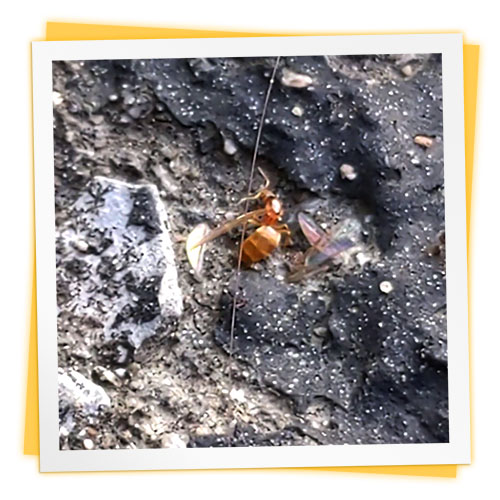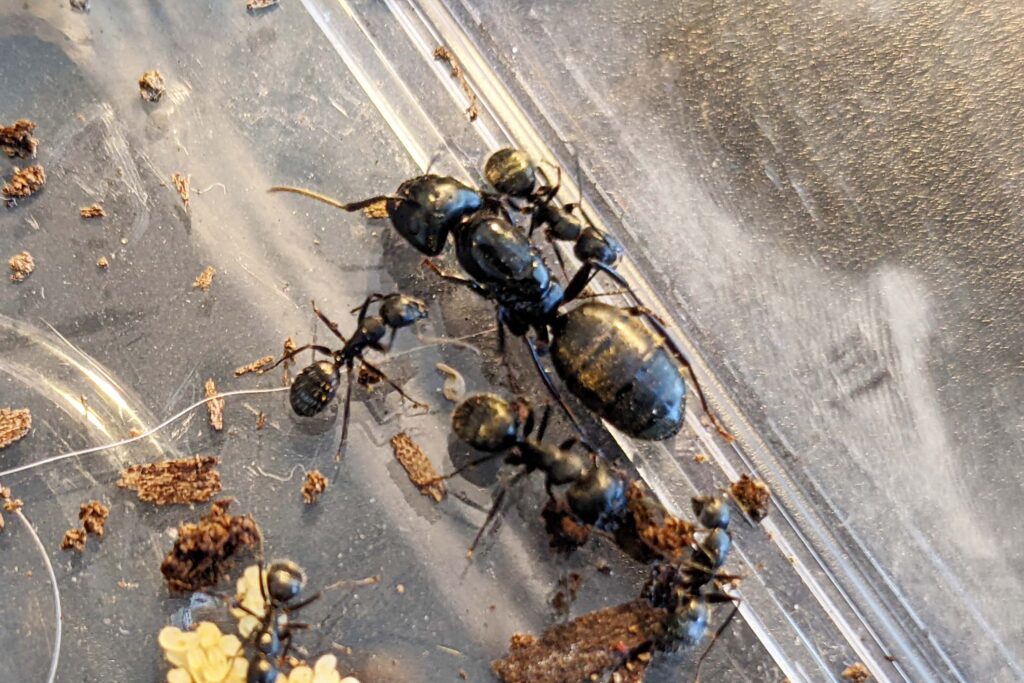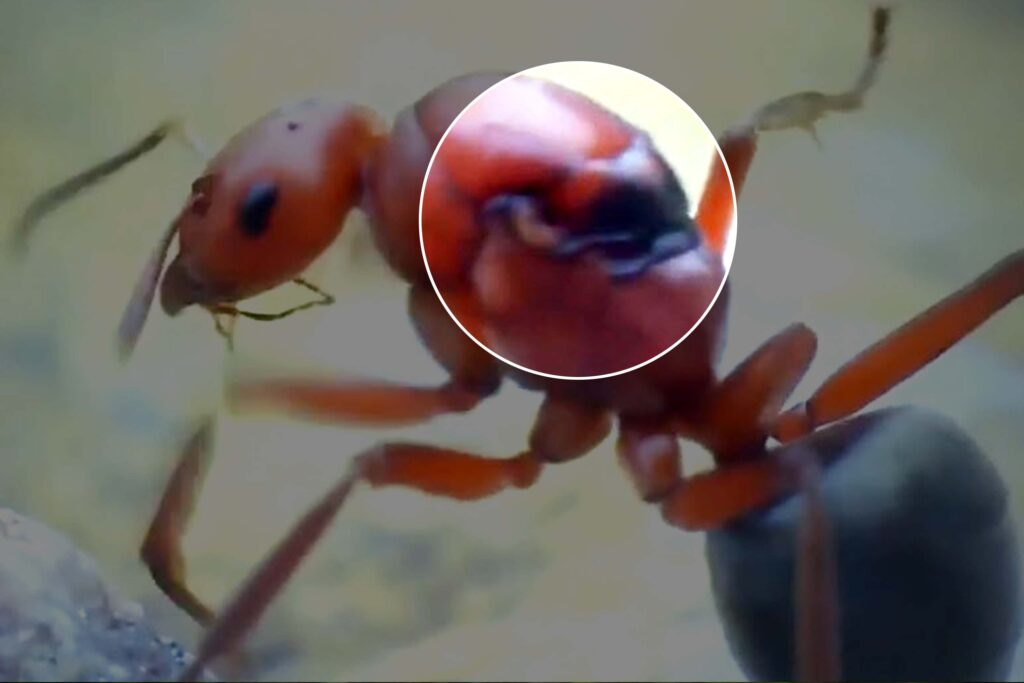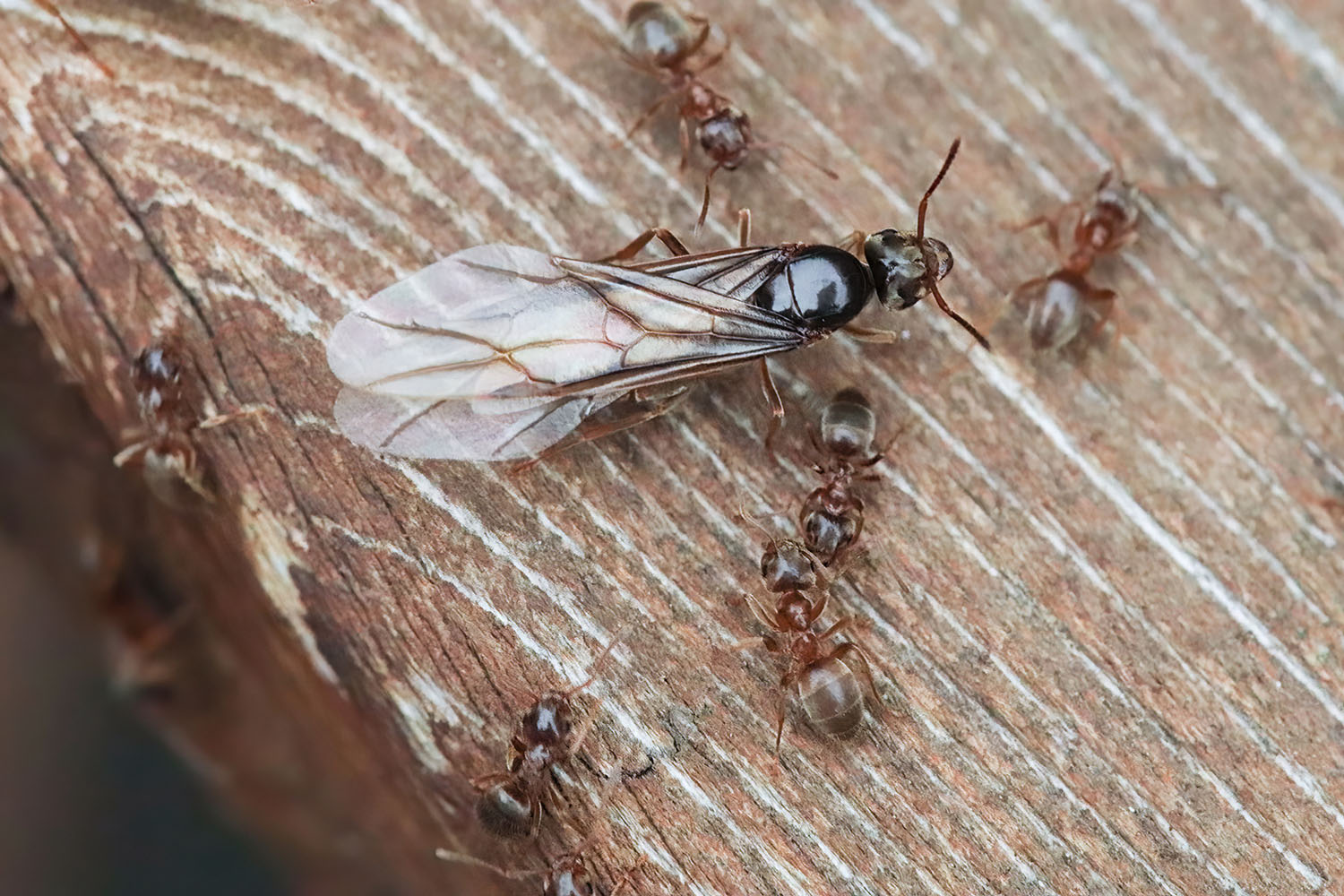This page may contain affiliate links.
Read our disclosure and privacy policy here.
What’s the difference between a queen ant and a worker ant? Well that’s an important thing to know if you’re going to be searching for queen ants to start your own colony. The thing is, most of the ants you see running around are worker ants. So here are some easy ways to tell if that special ant you’re looking at is a queen.
Table of Contents
5 Easy Ways To Tell The Difference Between A Queen Ant And A Worker Ant

Did You Know?
Did You Know?
Download Printables
QUEEN ANTS RIP OFF THEIR OWN WINGS!
Queen ants rip off their wings after mating! Their wings are highly reflective, so they rip them off in order to avoid being easily seen by predators like birds.

Queen ants are larger than worker ants
Queen ants are usually much larger than the worker ants of her species. Across all species of ants, queen ants can range from under one millimeter long (that’s like the thickness of a coin!) to over 40mm long (like the size of a AAA battery). If this is the first time you are going to be looking for a queen ant, just look for a larger-than-usual ant. Finding an ant that is much larger in size to most ants you see crawling about is usually a good sign that she may be a queen. The larger size of a queen ant is the main difference between a queen ant and a worker ant, and is easily noticeable.

Camponotus queen ant with workers
Queen ants will move in an erratic way
One of the first things you will notice when watching ants is that worker ants are fast. They usually move quickly in a more or less straight line. They always look like they have somewhere important to be, and something important to do. If you disturb them, worker ants will speed up even more, sometimes moving so fast that you lose track of them completely.
Queen ants, on the other hand, tend to be much slower. A newly mated queen will be wandering around, searching for a good place to start a colony (or a colony to invade in case of some parasitic species – yikes!). She will stop to investigate every nook and cranny. When disturbed, she will begin to move faster, but usually not as fast as the worker ants of her species. So another difference between a queen ant and a worker ant is that the queen will usually move slower and more erratically than the worker.
Queen ants search for an ideal location to found a new colony.
Queen ants may have wings
New alates (male ants and unmated queens) and newly mated queens will have wings. Some people may think that ants with wings are just a different species of ants – but actually winged ants are the reproductive ants of the colony. This means that they are the ones in charge of producing new ant colonies. Winged males and female ants will fly out of a colony when the time is right to mate with other males and females from other neighboring colonies of the same species. This is called the nuptial flight.
After mating, the males will fall to the ground and eventually die. The newly fertilized queens will land, and eventually rip off their wings and search for a good spot to start their new colony. Some queen ants will not rip of their wings and will keep them instead. If you see a winged ant, it is either a male, an unfertilized female, or a newly fertilized queen.
So while the presence of wings is definitely a difference between a queen ant and a worker ant, male ants also have wings.

Did You Know?
Did You Know?
Download Printables
MALE ANTS DIE AFTER MATING
The male ant is also known as a ‘drone’. His only purpose is to to mate with female alates, who will then go on to found new colonies. Drones serve no other useful purpose in the colony. They die soon after mating.
The difference between a winged male ant and winged female ant is quite easy to see. The winged male ant will have a larger head, larger eyes, and smaller body while the winged female ant will have a larger body than the male, with a larger abdomen and larger thorax. A winged male ant looks a lot more like a wasp when compared to a winged female ant
Queen ants search for an ideal location to found a new colony.
Queen ants have a large abdomen and thorax
The body proportions of a queen ant are quite different from a worker ant. Aside from being larger overall, the thorax and abdomen of a queen ant are much larger relative to her head, as compared to the same parts of a worker ant’s body. So if you see a species of ant where the queen is quite smaller compared to a worker ant of a larger species, you can usually tell the difference between a queen ant and a worker ant because the body proportions of a queen are distinctly different.
Queen ants may have wing scars
Finding wing scars on an ant’s thorax guarantees that it is a queen ant, and very likely fertilized as well. After a nuptial flight, a newly fertilized queen ant will usually rip off her wings. Ant wings will reflect light and could draw the attention of passing birds for example, so ripping off her wings could be a way for a queen ant to escape the notice of potential predators. Wing scars are usually on either side of the thorax, and appear like a scarred line that is darker in color than the rest of the thorax.
Sometimes you may also see a little piece of wing tissue left attached at the scar site. The wing scars on larger ants like Camponotus sp. (Carpenter ants) are easy to detect because of how large the queen ant is. For smaller species of ants, you may need a magnifying glass or a microscopeAn analog or digital microscope is an essential tool for nature exploration. Click the link to see our recommendation and product review. Learn More to see the scars. Sometimes for very small species of ants, this may be the only way for you to be certain you have a queen ant when you find a new species you are not familiar with. I use a digital microscope because it is much easier to use and examine the ants than a traditional microscope.

Formica aserva queen’s wing scars.

DISCUSSION
DISCUSSION
DISCUSSION
FOLLOW-UP TOPICS
Science Topics
Alate
Drone
Nuptial Flight

There’s a lot to explore right where we are, in our own neighborhoods and backyards! Join us while we get off the couch and explore the everyday wonders of nature, science, space, engineering, art, and anything else we stumble upon during on our adventures.



